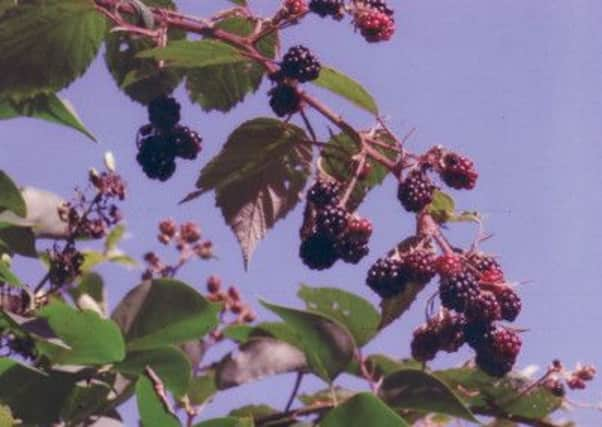Bumper year for blackberry’smany varieties


Not to speak of the 600 sub species in Britain. However, anyone who loves foraging for this succulent food will soon notice that there are many different fruits on offer in the hedges.
Some ripen early, and quickly turn to mush. They are often found on the clay caps of the Downs. Some on the lower slopes of flint and chalk with a south face, remain firm and sweet into November. They are among the best.
Advertisement
Hide AdAdvertisement
Hide AdThere is a sub species growing around the harbour that are as large as grapes and yet stay firm in wet weather and can be easily picked without turning your fingers to tattoos.
Those I have picked this year at the rate of two pounds in twenty minutes. I have stacked them in the freezer for the winter, when they’ll bring a taste of summer to a slice of sponge and a dob of custard.
My garden has been allowed to run wild over forty years so among the cowslips and primroses, herb bennets and nettle-leaved bellflowers are blackberry bushes.
I have so far taken three croppings off them. The birds help me to strip the mushy ones with raspberry fly larvae embedded. I have probably eaten scores of these wrigglers in my time which are after all only protein.
Advertisement
Hide AdAdvertisement
Hide AdBlackcap warblers have been eating the blackberries too, stoking up their bodes with the carbohydrates that can put five grams of fat around their ribs which is the fuel they will burn on the crossing of the continents.
All the warblers eat a few blackberries, and so I suspect do nightingales and redstarts which I have watched in mid September passing through Sussex to the sea crossing and on into Africa.
The blackberry bushes are hoe to hedge sparrows (dunnocks) which nest in the depths away from the jay and crow and grey squirrel.
Blackcap warblers have nested in them in my garden this year and so have the chiffchaff and the long-tailed tit. Blackbirds, robins, a song thrush and one year a whitethroat warbler have also nested in the brambles in my garden.
Advertisement
Hide AdAdvertisement
Hide AdIn my walks about the county I pass many a grand house with lawns sometimes a hundred yards in length that are as sterile as deserts to wildlife.
They do nothing more than make a setting for wealthy possessions. Just think of the wild birds butterflies and – yes – blackberries those people could have instead.
Wild gardens are just beginning to get a foothold in British culture but it will be several years yet before people will pride themselves not on the varieties of roses they can grow but blackberries too. They are after all, both in the same family.